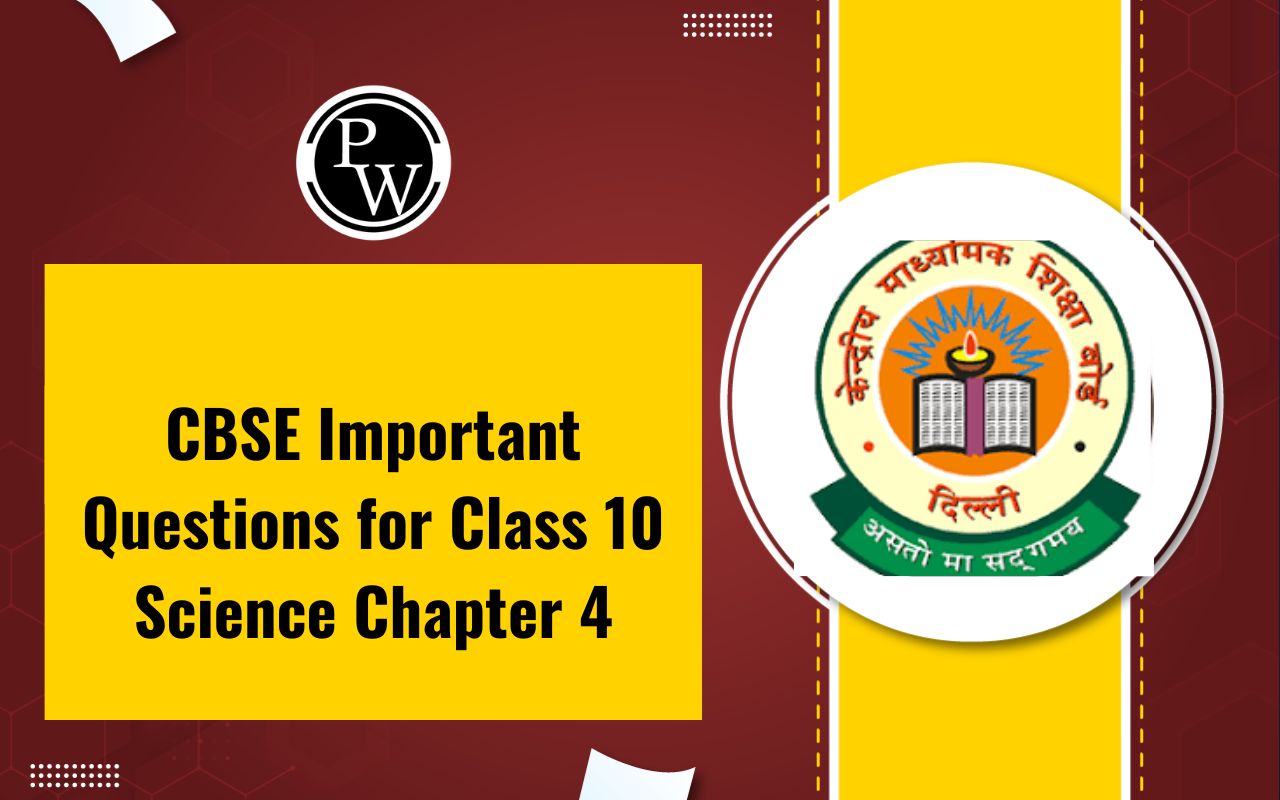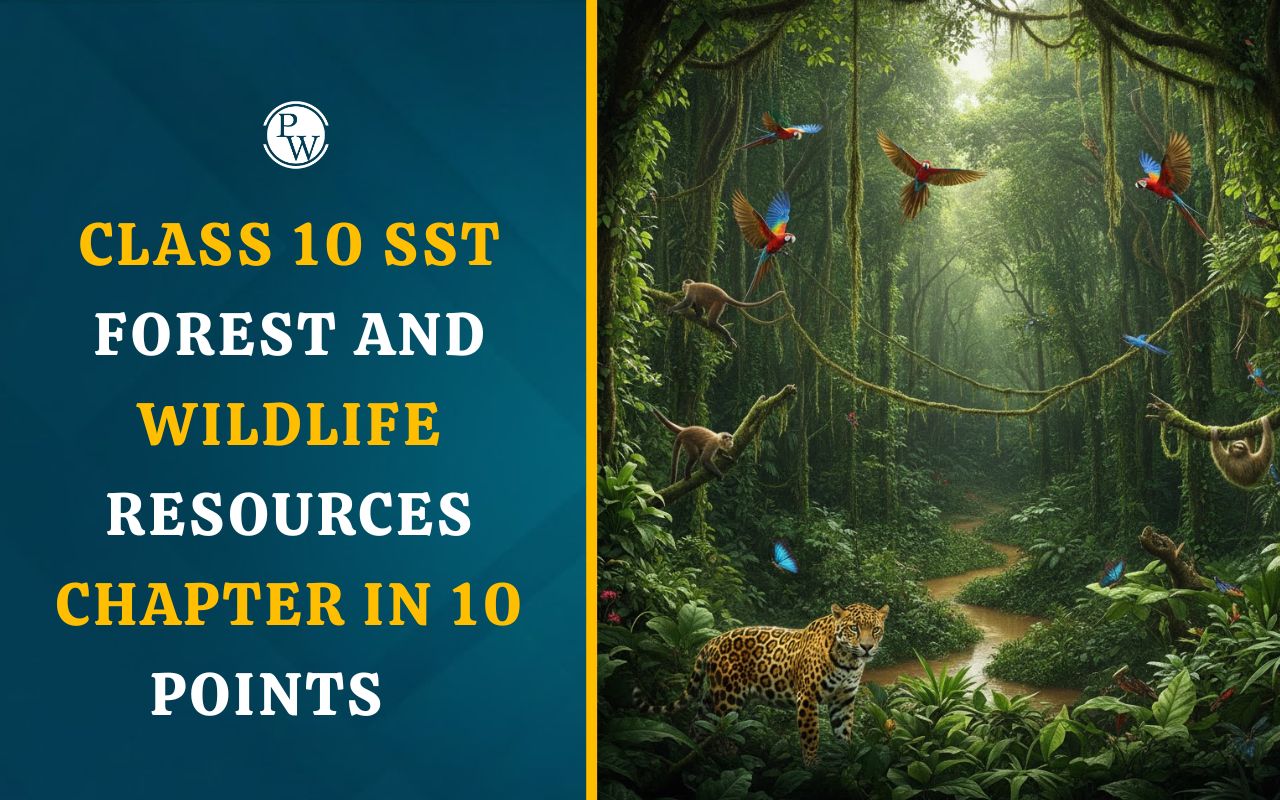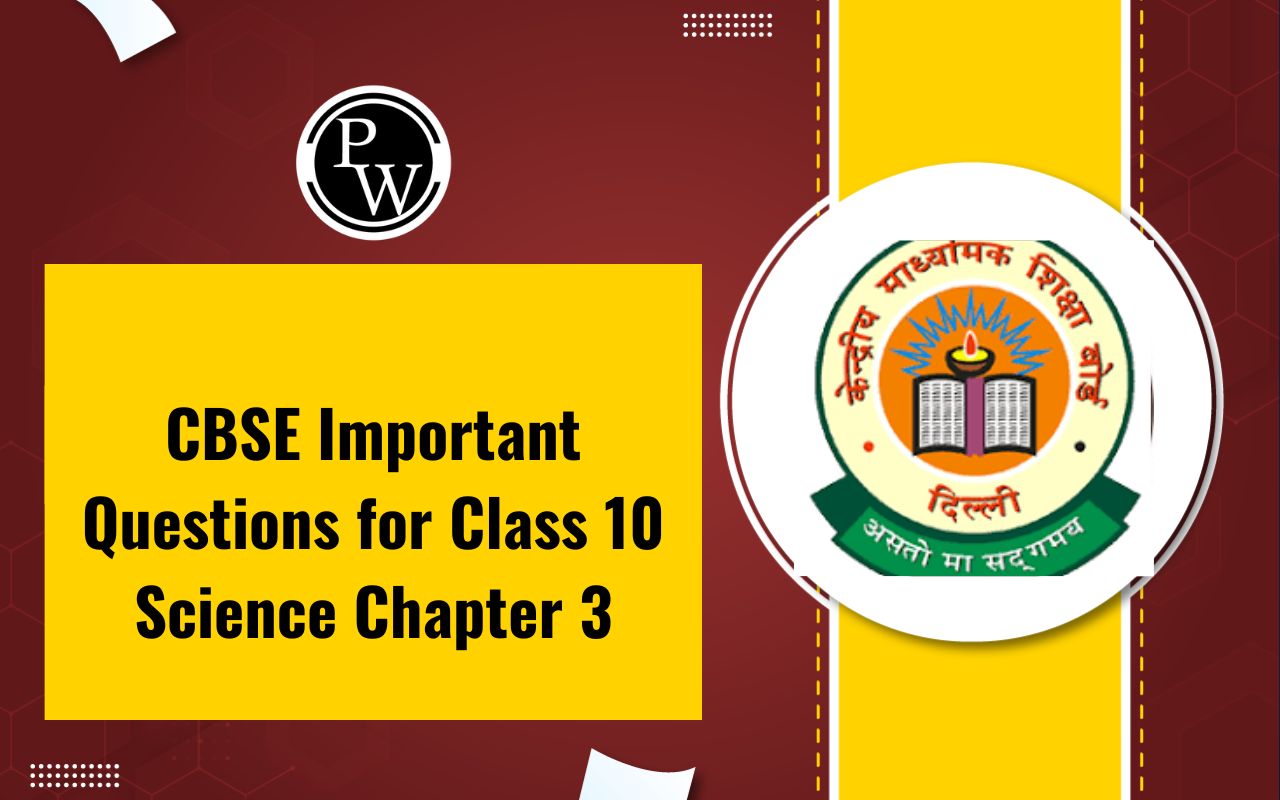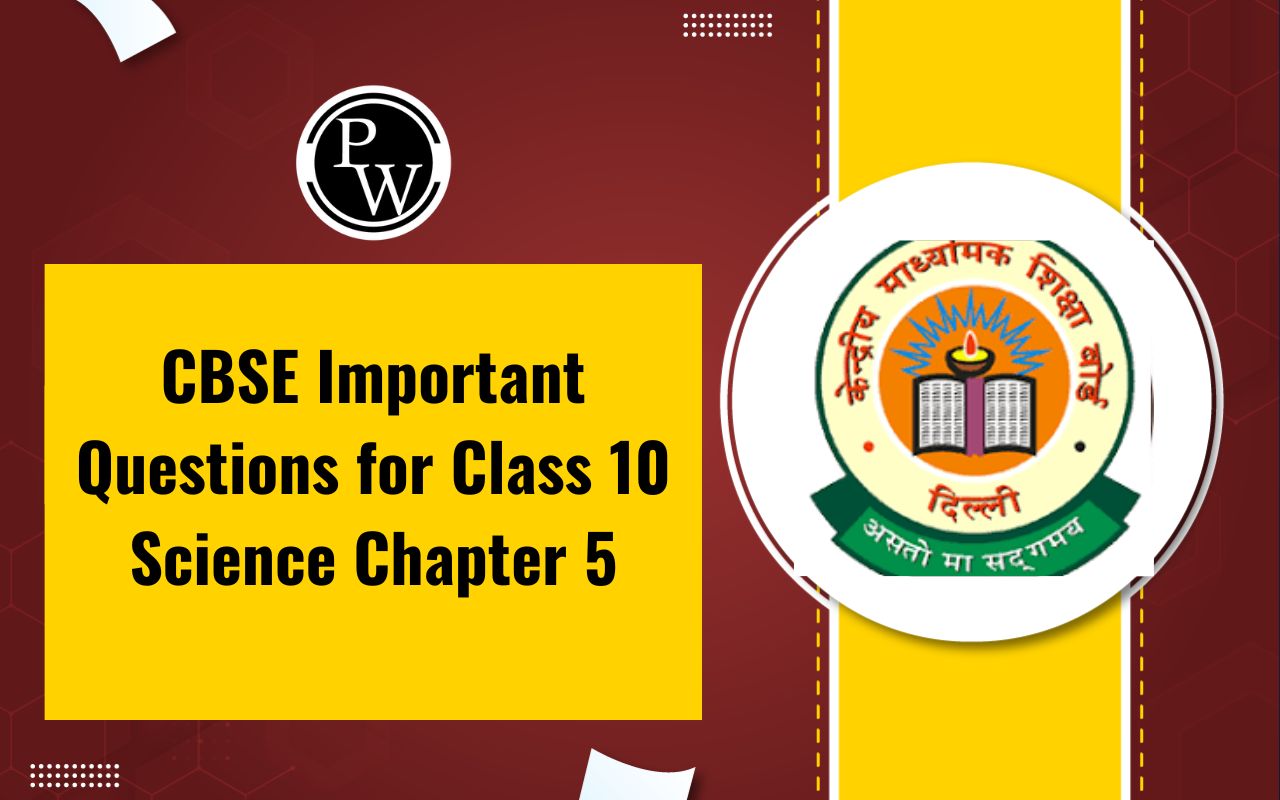
CBSE Important Questions for Class 10 Social Science Geography Chapter 3: CBSE Important Questions for Class 10 Social Science Geography Chapter 3 Water Resources help students understand key concepts related to the availability, distribution, and conservation of water.
These questions cover important topics such as sources of freshwater, water scarcity, the need for conservation, and sustainable management of water resources. Students should focus on key concepts like multipurpose river projects, rainwater harvesting, and the impact of over-exploitation of groundwater. Practicing these important questions will enhance conceptual clarity and prepare students effectively for board exams.
CBSE Important Questions for Class 10 Social Science Geography Chapter 3 Water Resources Overview
Water is an essential natural resource that sustains life on Earth. Although about 71% of the Earth’s surface is covered with water, only 2.5% of it is freshwater, making its conservation crucial. This chapter discusses the availability, distribution, conservation, and management of water resources in India.
Key Topics Covered in the Chapter
1. Water Scarcity and Its Causes
Water scarcity refers to the shortage of fresh water to meet human and environmental needs. The main reasons for water scarcity include:
-
Overpopulation leading to excessive water demand.
-
Unequal distribution of water resources across different regions.
-
Over-extraction of groundwater for agriculture and industries.
-
Deforestation and climate change affecting rainfall patterns.
-
Pollution of water bodies due to industrial and domestic waste.
2. Multipurpose River Valley Projects
Multipurpose river valley projects are large dams constructed for multiple purposes like irrigation, hydroelectricity, flood control, water supply, and recreation. Some important projects include:
-
Bhakra Nangal Dam on the Sutlej River
-
Hirakud Dam on the Mahanadi River
-
Sardar Sarovar Dam on the Narmada River
These projects provide benefits but also cause displacement of people, loss of biodiversity, and conflicts over water sharing.
3. Rainwater Harvesting
Rainwater harvesting is the collection and storage of rainwater for later use. It is an effective way to conserve water and reduce dependence on groundwater. Some traditional methods include:
-
Khadins and Johads (Rajasthan)
-
Bamboo Drip Irrigation (Meghalaya)
-
Guls and Kuls (Himalayan region)
4. Need for Sustainable Water Management
-
Promoting afforestation to maintain the water cycle.
-
Reducing industrial pollution of water bodies.
-
Using drip and sprinkler irrigation to save water in agriculture.
-
Implementing strict water conservation policies.
CBSE Important Questions for Class 10 Social Science Geography Chapter 3 Water Resources PDF
CBSE Important Questions for Class 10 Social Science Geography Chapter 3 Water Resources help students prepare effectively for their exams by covering key topics such as water scarcity, conservation methods, multipurpose river valley projects, and sustainable management of water resources. Practicing these questions enhances conceptual understanding and improves answer-writing skills. To access the complete set of important questions in PDF format, click on the link provided below.
CBSE Important Questions for Class 10 Social Science Geography Chapter 3 Water Resources PDF
CBSE Important Questions for Class 10 Social Science Geography Chapter 3 Water Resources
Here are the important CBSE Important Questions for Class 10 Social Science Geography Chapter 3 Water Resources covering key topics such as water scarcity, conservation methods, multipurpose river projects, and sustainable water management. These questions will help students strengthen their understanding and prepare effectively for exams.
Section – A (1 Mark)
1.Which one of the following is not a source of freshwater?
(A) Oceans
(B) Surface runoff
(C) Ice-sheets
(D) Groundwater
Ans. (A) Oceans
2. Why is there water scarcity even when water is available in many cities?
(A) Using to utility
(B) Unequal distribution of water
(C) Default in technical areas
(D) Lack of infrastructure for proper distribution
Ans. (B) Unequal distribution of water
3. Which of the following multipurpose projects is found in the Satluj-Beas River basin?
(A) Hirakud Project
(B) Damodar Valley Corporation
(C) Bhakra Nangal Project
(D) Rihand Project
Ans. (C) Bhakra Nangal Project
4. On which of the following issues did the Narmada Bachao Andolan first focus?
(A) Benefits of irrigation to landless farmers
(B) Environmental issues related to the submergence of trees under the dam water
(C) Rehabilitation of people displaced due to the construction of the dam
(D) Economic issues of wastage of money for the construction of the dam
Ans. (B) Environmental issues related to the submergence of trees under the dam water
5. Which state is the first in India to make rooftop rainwater harvesting structures compulsory for all houses across the state?
(A) West Bengal
(B) Meghalaya
(C) Rajasthan
(D) Tamil Nadu
Ans. (D) Tamil Nadu
6. How do people conserve or harvest water in the hilly or mountainous regions?
Ans. By building diversion channels like the ‘guts’ or ‘kuls’.
7. Which was the largest artificial lake of ancient India built in the 11th century?
Ans. Bhopal Lake
8. Name the river on which the Koyna and Nagarjuna Sagar dams are located.
Ans. Krishna River
9. What is a river basin?
Ans. It is the area which is drained by a single river system. It is also called a drainage basin.
10. Name the two types of dams based on structure and material used. Ans. Timber Dams, embankment dams or masonry dams.
Ans. Timber Dams, embankment dams or masonry dams.
Section-B (2 Marks)
11. What was considered a viable alternative to the multipurpose projects and why?
Ans. The disadvantages and growing resistance to multipurpose projects have led to the conclusion that water harvesting systems are a viable alternative, both socio-economically and environmentally.
12. What are dams? How do these help to conserve and manage water?
Ans. A dam is a barrier across flowing water that obstructs, directs or retards the flow often creating a reservoir, lake or impoundment.
(i) Dams were traditionally built to impound rivers and rainwater that could be used later to irrigate agricultural fields.
(ii) Dams are also a source of perennial canals.
13. Who proclaimed the dams as the temples of modern India? Give a reason.
Ans. Jawaharlal Nehru proudly proclaimed the dams as the ‘temples of modern India’; the reason being that it would integrate the development of agriculture and the village economy with rapid industrialisation and growth of the urban economy.
14. How has Tamil Nadu solved the problem of acute shortage of water?
Ans. Tamil Nadu has been able to deal with the problem of acute shortage of water by adopting rooftop water harvesting techniques. This practice was made mandatory under the law for all houses across the state.
15. Does urbanisation lead to water pollution? Elaborate.
Ans. Urbanisation leads to water pollution. This can be understood through the following arguments:
(1) Concretization due to urbanization leads to less groundwater recharge.
(2) Industrial effluents are released into the water system without any treatment leading to pollution
Section-C (3 Marks)
16. ‘Multipurpose projects and large dams have also been the cause of many social movements’. Name any two such movements. Why these movements were launched?
Ans. Multipurpose projects and large dams have also been the cause of many new social movements like the ‘Narmada Bachao Andolan’ and ‘Tehri Dam Andolan’ etc. Resistance to these projects has primarily been due to the large–scale displacement of local communities. Local people often had to give up their land, livelihood and their meagre access and control over resources for the greater good of the nation.
17. Why are different water harvesting systems considered a viable alternative both socioeconomically and environmentally in a country like India?
Ans.
(i) Water harvesting is a very cheap and affordable method of conservation of water.
(ii) Indian people have in-depth knowledge of rainfall regimes and soil types. They have developed techniques to harvest rainwater, groundwater, rainwater and flood water in keeping with the local ecological conditions and their water needs.
(iii) Rainwater harvesting techniques are more environment friendly as compared to multipurpose river projects.
18.How does an increasing number of industries exert pressure on existing freshwater resources?
Ans.
(i) Industries used water as the coolant, raw material, solvent, etc.
(ii) Industries release harmful chemicals which contaminate water.
(iii) Most of the Indian rivers are polluted due to toxic chemicals which are released by industries.
19. Write the adverse effects of over-exploitation of groundwater resources.
Ans. Pumping out more water from under the ground may lead to falling groundwater levels.
(i) It will adversely affect water availability.
(ii) This, in turn, will affect our agriculture and food security of the people.
(iii) The impoverishment of water resources may adversely affect the ecological cycle.
20. What is the ‘Narmada Bachao Andolan’? Why was it organized? What are the issues raised by this movement?
Ans.
a. Narmada Bachao Andolan is a prominent social movement to acquire access to and control natural resources endowed to the local people.
b. The activities of the Narmada Bachao Andolan in the late 1980s and 1990s brought worldwide attention to the plight of the people from the area of Sardar Sarovar Dam across the Narmada River which is spread over the states of Gujarat, Maharashtra and Madhya Pradesh.
c. Narmada Bachao Andolan is a nonGovernment Organisation that mobilized tribal people, farmers, environmentalists and human rights activists against Sardar Sarovar Dam.
d. It originally focused on the environmental issues related to trees that would be submerged under the dam water. e. Recently it has refocused the aim to enable poor citizens, especially the oustees to get full rehabilitation facilities from the government.
Benefits of Solving CBSE Important Questions for Class 10 Social Science Geography Chapter 3 Water Resources
Enhances Conceptual Understanding – Practicing important questions helps students grasp key topics like water scarcity, conservation methods, multipurpose river valley projects, and sustainable water management.
Improves Answer Writing Skills – By solving these questions, students learn how to present their answers effectively, which is crucial for scoring high marks in the CBSE board exams.
Boosts Exam Confidence – Regular practice of important questions reduces exam anxiety and increases confidence by familiarizing students with the question patterns.
Time Management – Answering a variety of questions helps students manage time efficiently during exams, ensuring they complete the paper within the given duration.
Strengthens Problem-Solving Abilities – Many geography-based questions require analytical thinking. Solving these questions sharpens problem-solving skills, especially for map-based and application-based questions.
CBSE Important Questions for Class 10 English First Flight FAQs
What topics are covered in Chapter 3 Water Resources of Class 10 Geography?
Why should I practice CBSE important questions for this chapter?
What types of questions can I expect from this chapter in the board exam?
How do important questions help in exam preparation?










